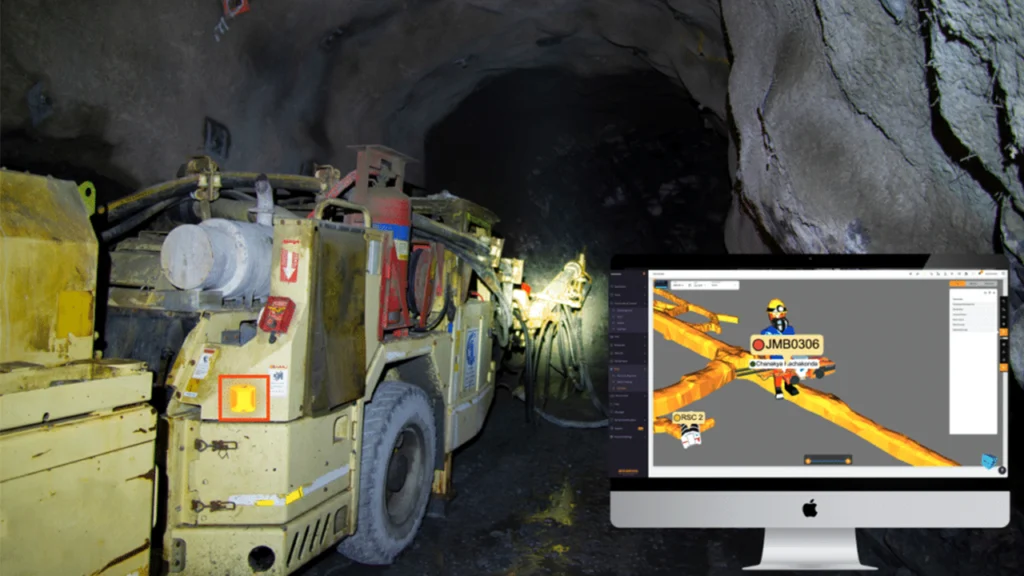Asset tracking in underground mines is a critical part of your daily operations – it helps you get miners up-and-running faster so you can mine more tons every shift. Managing and locating valuable assets such as equipment, tools, and supplies in the challenging underground environment can be a daunting task. That’s where Real-Time Location Systems (RTLS) come into play. RTLS technology provides a reliable and efficient solution for asset tracking underground, ensuring that mining companies have complete visibility and control over their valuable resources.
With GroundHog’s RTLS technology, assets are equipped with small, lightweight tags that transmit their location information in real time. These Tags are Bluetooth Low Emitting Devices (also called BLE Tags), and are IP68 rated and MIL-STD-810 compliant, and are built for use in harsh underground environments. These tags can be attached to equipment, tools, vehicles, or even containers holding supplies. The tags communicate with a network of fixed anchor tags (again, self-powered, BLE based) points strategically installed throughout the mine, creating a comprehensive tracking system.
The use of RTLS for asset tracking underground offers several benefits. Let’s explore some of the key advantages:
1. Real-Time Asset Location Tracking:
RTLS enables mine operators to have real-time visibility of asset locations. This information is invaluable for efficient resource allocation, as it allows operators to quickly locate and retrieve assets when they are needed. It eliminates time wasted searching for misplaced or lost equipment, minimizing downtime and maximizing productivity.
2. Asset Tracking in Underground Mines deters Theft and prevents Loss:
Underground mines can be vast and complex, making it challenging to prevent asset theft or loss. While asset theft is not that big of a threat in underground mines, RTLS technology acts as a deterrent to theft of smaller hand tools, and unauthorized use. If an asset equipped with an RTLS tag is moved or exits a designated area without authorization, an alert is triggered, notifying security personnel. This proactive approach helps prevent theft and ensures that assets are always accounted for.
3. Dispatch can Optimize Asset Utilization:
RTLS provides valuable data on asset utilization, enabling operators to optimize their use. By analyzing the information collected by the system, mine operators can identify assets that are underutilized or overused. This insight allows for better asset planning, scheduling, and maintenance, ultimately leading to improved efficiency and cost savings.
4. Reducing Redundancy by Asset Tracking in Underground Mines:
In underground mining operations, it’s not uncommon for assets to be duplicated or underutilized due to limited visibility. RTLS enables operators to identify redundant assets and make informed decisions regarding their usage. By optimizing asset utilization, mining companies can reduce unnecessary expenses, streamline operations, and improve overall cost-effectiveness.
5. Data-Driven Decision-Making:
RTLS systems generate a wealth of data on asset movement, utilization patterns, and performance. This data can be analyzed to gain valuable insights into operational inefficiencies, workflow bottlenecks, and areas for improvement. By leveraging this data, mine operators can make data-driven decisions, implement process improvements, and optimize asset management strategies.
In conclusion, RTLS technology revolutionizes asset tracking in underground mines. The real-time visibility and control it provides enable mining companies to optimize asset utilization, prevent theft and loss, streamline maintenance processes, and make informed decisions based on data insights. By harnessing the power of RTLS for asset tracking, underground mines can operate more efficiently, reduce costs, and achieve greater productivity and profitability.
